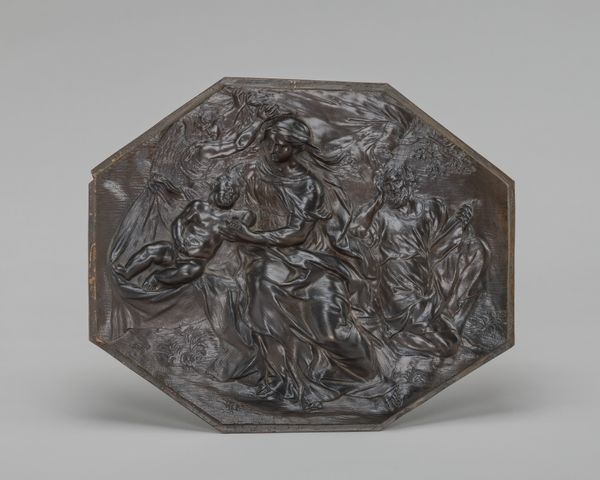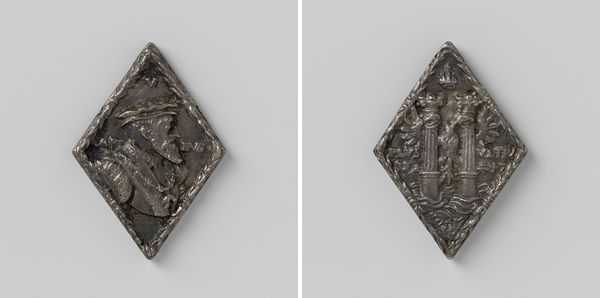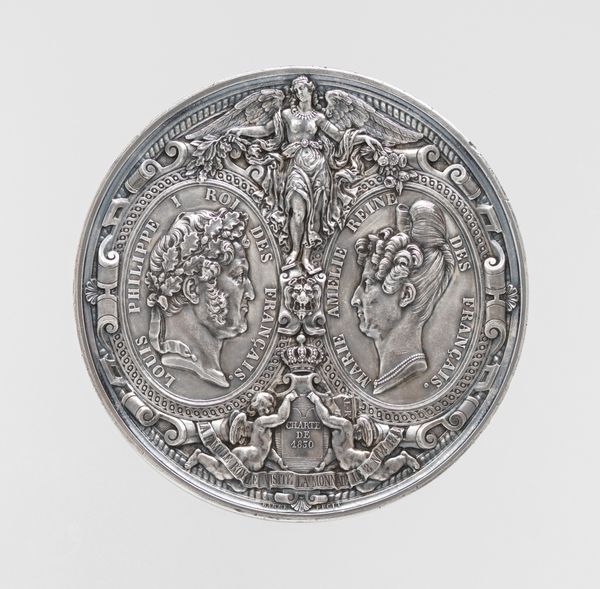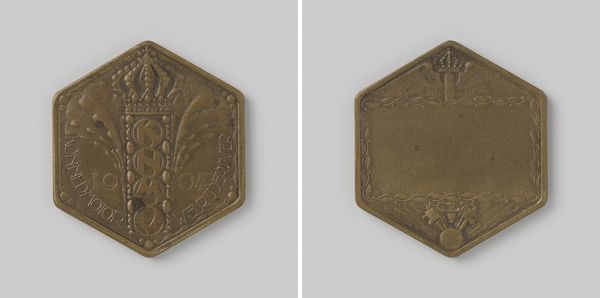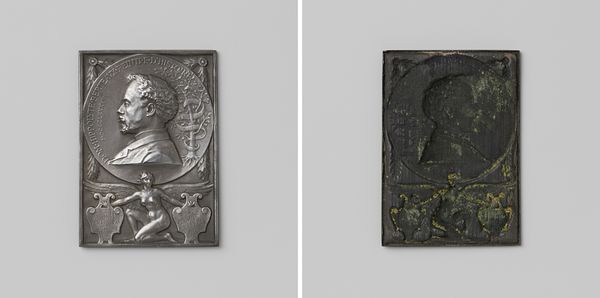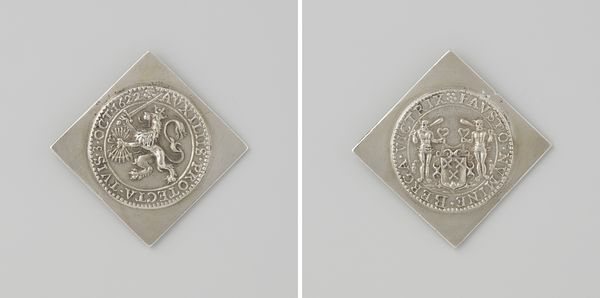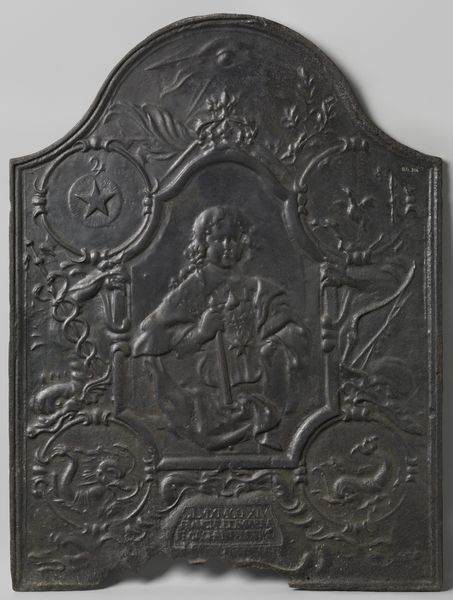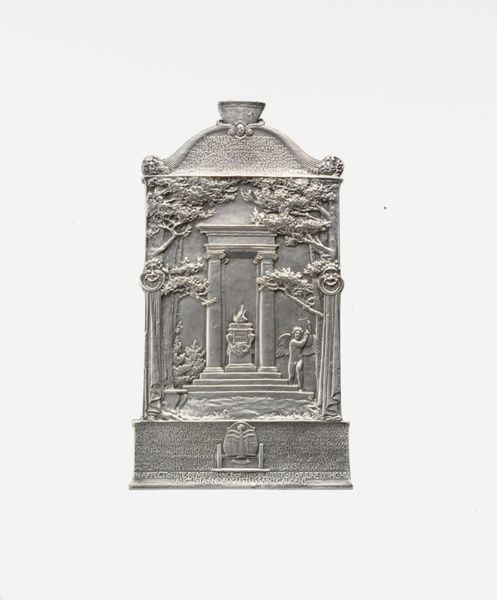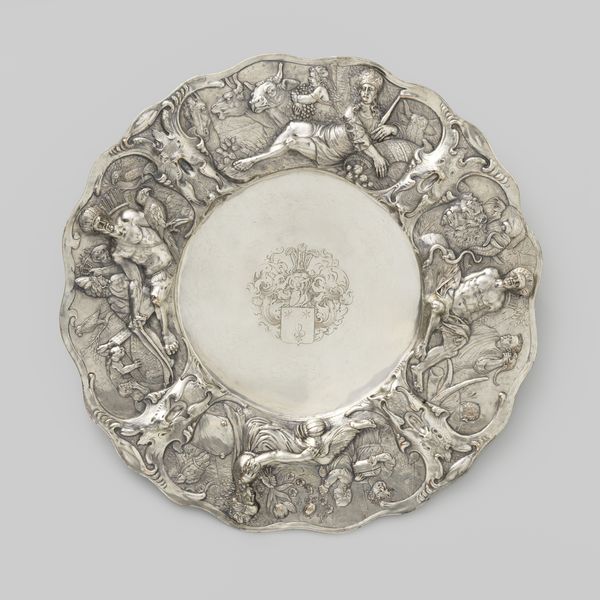
drawing, print
#
drawing
# print
#
sculpture
#
figuration
#
11_renaissance
#
history-painting
#
italian-renaissance
Copyright: Städel Museum
Curator: Andrea Mantegna created this work, “Five Designs for a Cross,” between 1470 and 1490. Editor: It strikes me as austere and reverential, immediately. The monochrome palette and geometrically framed figures lend a somber mood. Curator: The composition arranges five distinct figural images in a quincunx pattern, each within an ornate, eight-pointed frame. The medium appears to be either drawing or early printmaking, giving it a fine, linear quality. Editor: Looking at the imagery, there's a distinct iconography. The suffering Christ is ringed by skulls, starkly contrasting with the angelic assembly above. It's about sacrifice and redemption, rendered with chilling precision. Curator: Indeed. The structural arrangement is crucial. Note the central image, possibly Christ as the Man of Sorrows, dominating the visual field. The framing devices unify the individual panels, creating a cohesive visual system. Editor: That central image speaks volumes. The surrounding skulls aren't just decoration; they symbolize mortality, directly linked to Christ's sacrifice. It’s a powerful memento mori within a religious context. Then you see what appears to be Mary in mourning on the left side, furthering a symbolic narrative, don’t you think? Curator: The line work and delicate hatching certainly suggest a careful approach to the texture and form. The modularity interests me; the artist treats each section with distinct attention while using analogous detailing for the borders and a shared grayscale color. Editor: Absolutely, and the deliberate contrast between the upper scene of celestial glory and the lower images of human suffering reinforces a message of hope, a reward for earthly sacrifice that resonated strongly during the Renaissance. The work is like a map to that reward; and each icon holds a piece. Curator: The piece stands as an interesting artifact for Renaissance aesthetics – combining humanism, religious symbolism, and an appreciation for formalized geometrical structure. Editor: A potent intersection of mortality and hope, beautifully articulated through familiar figures and a thoughtful layout.
Comments
stadelmuseum over 1 year ago
⋮
Exhibiting quite some detail, these pen and ink drawings from the circle of Andrea Mantegna are thought to have been executed in the 1480s. Since they were later cut out, their original context is no longer known and we can only speculate as to their intended function. They may have served as studies for three-dimensional works of goldsmithery. In fifteenth-century Italy, small processional crosses with relief figures on either end were quite widespread. It is also conceivable that the drawings were used as models for enamelwork (niello) or for printed graphic reproductions.
Join the conversation
Join millions of artists and users on Artera today and experience the ultimate creative platform.
